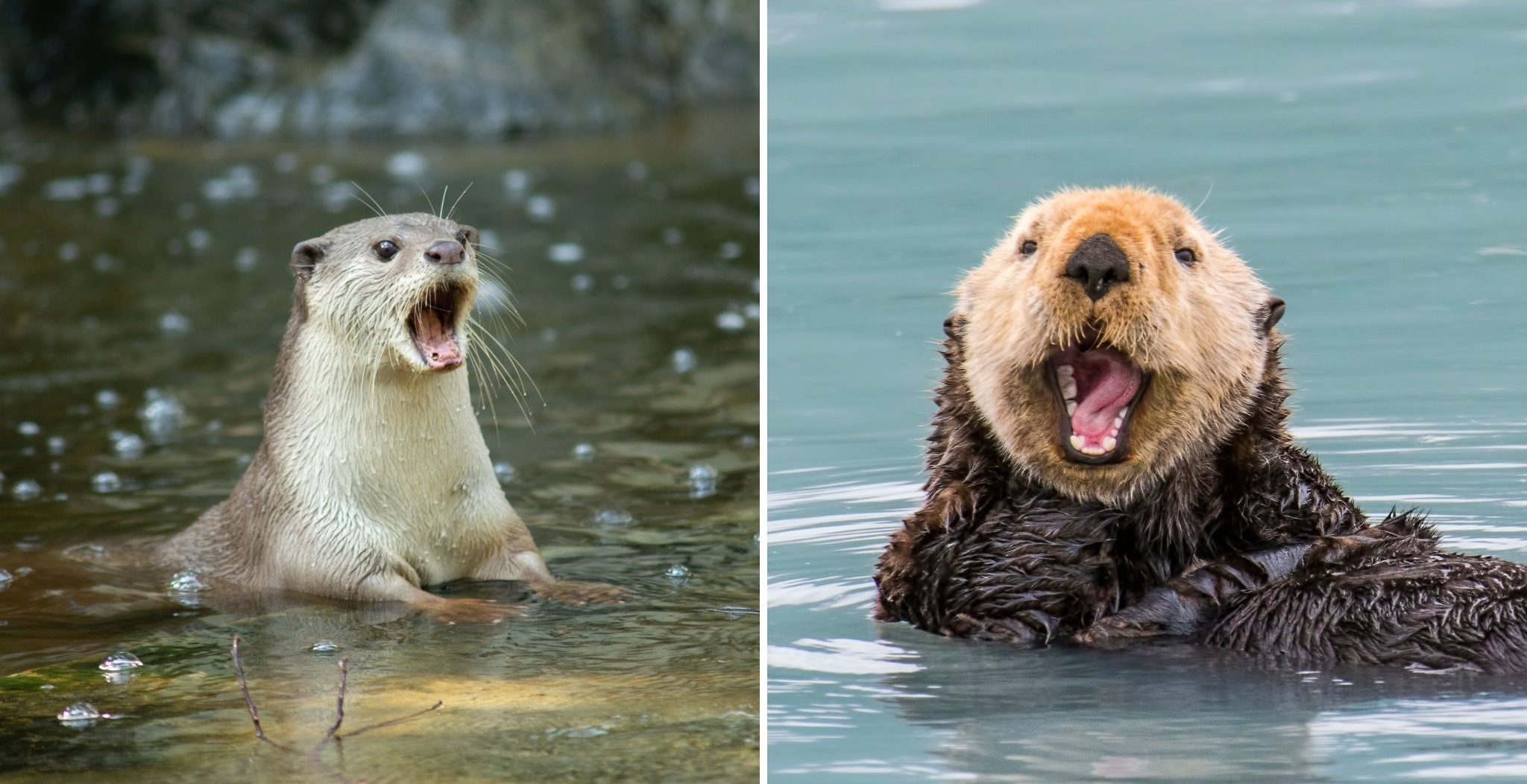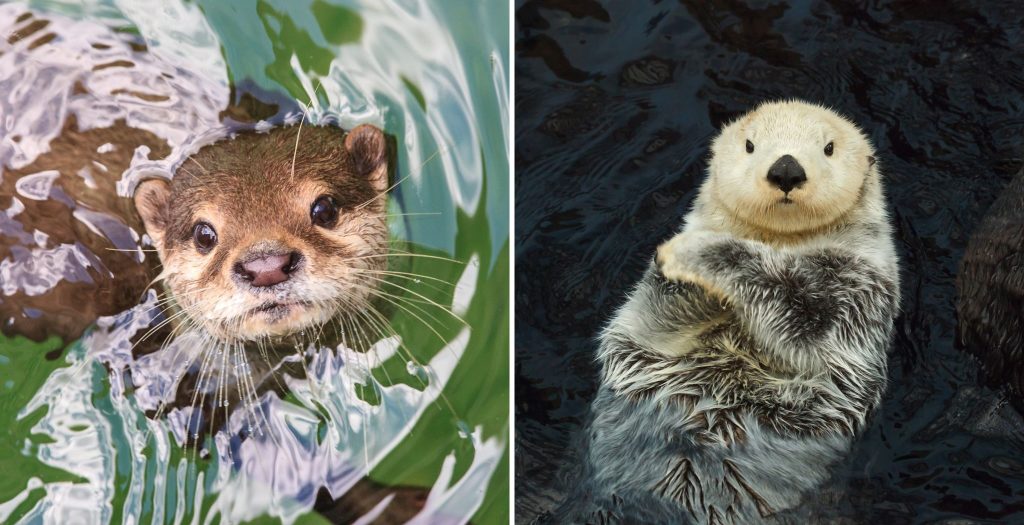
Otters are undeniably some of the most charismatic creatures in the animal kingdom. But not all otters are the same. Two of the most well-known species—river otters and sea otters—share some similarities, but their differences are just as fascinating. Whether you’re a nature enthusiast, an aspiring wildlife photographer, or just curious about the animal world, here’s a deep dive into what sets these two adorable mammals apart.
Habitat: Freshwater vs Saltwater Worlds
- River Otters live in freshwater environments—lakes, rivers, marshes, and wetlands across North America. They’re semi-aquatic and spend plenty of time on land, using dens (often in abandoned burrows or tree roots) for shelter.
- Sea Otters, on the other hand, are marine mammals found along the coastal waters of the North Pacific. They rarely come ashore, spending nearly all their lives floating, grooming, and hunting in the ocean.
Size and Appearance
- River Otters are sleek and agile, measuring around 3 to 4 feet long (including the tail) and weighing between 10–30 pounds. They have streamlined bodies and long, muscular tails to help them swim fast in narrow freshwater channels.
- Sea Otters are the heftier cousins, growing up to 5 feet long and weighing 50–100 pounds. Their bodies are bulkier, and they have shorter tails. One standout feature? Their incredibly dense fur—the thickest in the animal kingdom—to keep them warm in icy ocean waters.
Behavior and Social Life
- River Otters are playful and solitary or found in small family groups. They’re known for sliding down muddy or snowy banks and wrestling with siblings or offspring.
- Sea Otters are more social, often floating together in “rafts” that can include dozens of otters. They use tools like rocks to crack open shellfish and will sometimes wrap themselves in kelp to stay anchored while sleeping.
Diet: What’s on the Menu?
- River Otters are opportunistic eaters, dining on fish, frogs, crayfish, and small mammals. They hunt by sight and touch, often using their whiskers to detect prey in murky water.
- Sea Otters feast on marine invertebrates—sea urchins, clams, crabs, and mussels. Their tool use is legendary: they’ll carry a favorite rock in a pouch under their forearm to smash open hard shells.
Conservation Status
- River Otters have made a strong comeback in many parts of North America thanks to pollution control and wetland restoration. They’re generally listed as Least Concern by the IUCN.
- Sea Otters, however, are more vulnerable. Once hunted to near-extinction for their fur, they are now threatened, particularly by oil spills, pollution, and environmental changes. Conservation efforts are ongoing to help their populations recover.
Quick Comparison Table
| Trait | River Otter | Sea Otter |
|---|---|---|
| Habitat | Freshwater (rivers, lakes) | Coastal marine (Pacific Ocean) |
| Size | 10–30 lbs, 3–4 ft long | 50–100 lbs, up to 5 ft long |
| Social Behavior | Solitary or in small groups | Social; float in groups (rafts) |
| Diet | Fish, amphibians, crustaceans | Shellfish, sea urchins, mollusks |
| Tool Use | Rare | Frequent (uses rocks) |
| Time on Land | Often on land | Mostly in water |
| Conservation Status | Least Concern | Threatened or Endangered (region-dependent) |
Final Thoughts
While river otters and sea otters share the same playful spirit, they live vastly different lives shaped by their environments. River otters dart through forested streams; sea otters bob gently among the kelp. Understanding their differences not only helps us appreciate them more—it also highlights the unique roles they play in their ecosystems.
Next time you spot an otter, take a closer look—you just might be witnessing one of nature’s most skilled swimmers or most inventive diners in action.

Want to Learn More?
- Meet the River Otter: The Playful Guardians of Freshwater
- River Otter Facts (National Wildlife Federation)
- Meet the Sea Otter: The Ocean’s Furry Protectors
- Sea Otter Conservation (Monterey Bay Aquarium)
Disclaimer: This blog post is for edutainment purposes only and may not be entirely accurate.






